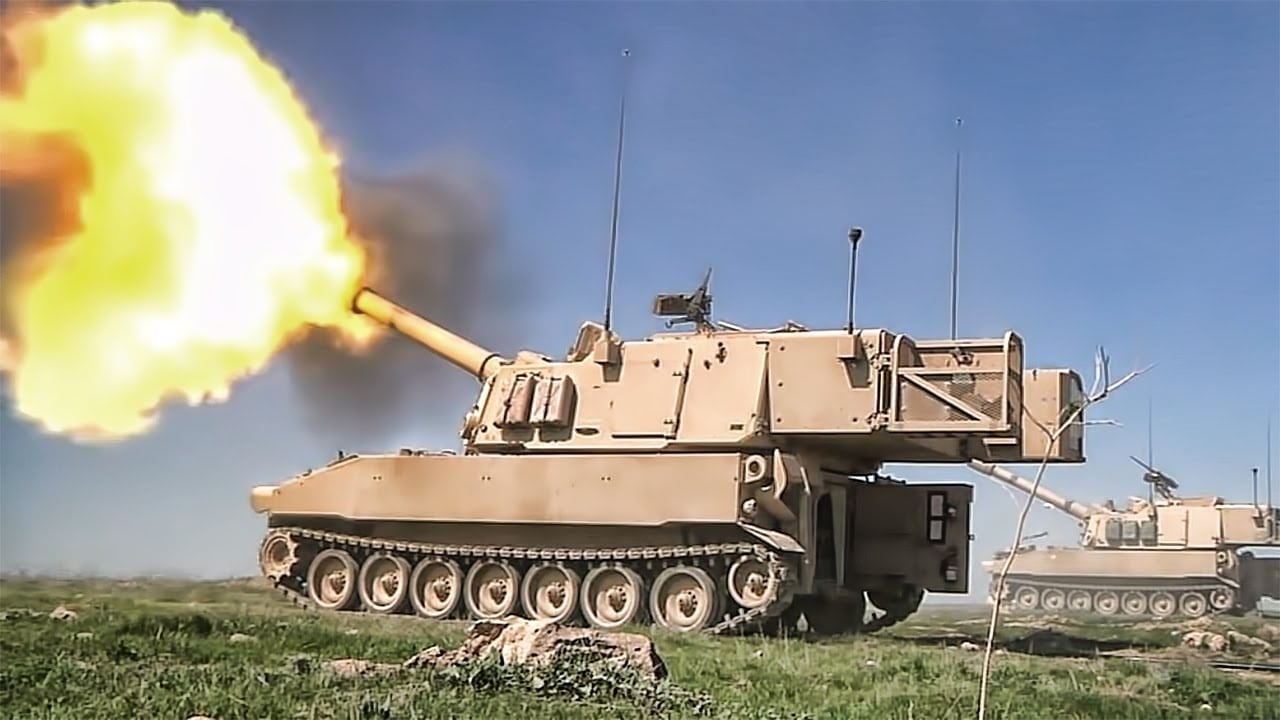Even if Russia withdrew its forces today, the people of Ukraine would suffer from the invasion and ensuing conflict for years, possibly even decades, to come. That is because upward of 30% of Ukraine – 65,000 square miles, an area twice the size of Austria – is contaminated with landmines and unexploded ordnance.
(Subscribe to Our YouTube Channel Here)
It has been described as the largest deployment of such mines since the Second World War.
As previously reported, New York-based Human Rights Watch warned in June that Russia was using landmines and other ordnance “that are causing civilian casualties and suffering, as well as disrupting food production.”
The group detailed seven types of antipersonnel mines that Russian forces in Ukraine are known to have used since the invasion began in late February.
“Russia is the only party to the conflict known to have used banned antipersonnel mines, while both Russia and Ukraine have used anti-vehicle mines,” Human Rights Watch reported, adding that “Ukraine appears to be abiding by its obligations as a member of the international treaty prohibiting antipersonnel mines, which it ratified in December 2005.”
Among the mines being used by the Kremlin’s forces are POM-2 and POM-3 mines that are reportedly dropped indiscriminately by aircraft or fired from specialized ground launchers. As Wired described, these are not buried but rather are scattered across large swaths of land.
As a result, there is no reliable way to remotely track or disarm the mines. The POM-3 was never employed in combat until Russia used it in Ukraine. It was designed with a seismic sensor that triggers the mine when disturbed by footsteps. Once tripped, it jettisons an explosive payload to roughly head height before detonating.
Shrapnel is reported to be lethal out to around 15 meters.
More Than Mines
Russian troops have also left a number of improvised bombs that include grenades rigged with duct tape and tripwires. The goal here is to terrorize Ukrainian civilians.
“Russia’s brazen use of antipersonnel mines in a country that has explicitly prohibited these weapons is unprecedented and deserves strong global condemnation,” suggested Steve Goose, arms director at Human Rights Watch, chair of the International Campaign to Ban Landmines, and a 1997 Nobel Peace Laureate. “Antipersonnel landmines should never be used due to their inevitable and long-term threat to civilian life and livelihoods.”
It is also important to note that Ukraine is a party to the Ottawa Treaty banning anti-personnel mines.
That treaty covers any bombs that are designed to kill and maim individuals who stumble across them, as opposed to mines designed for tanks or other vehicles.
There has been no documented use of such anti-personnel weapons by Ukrainian forces.
However, Kyiv has employed anti-vehicle/anti-tank mines to great effect, and this has taken its toll on Russian tanks and other military vehicles.
Efforts to Clear the Mines
Earlier this year, Cambodia – a nation that has experienced its own problems with landmines – announced that it would send teams of deminers to help train Ukrainians in clearing landmines planted by Russian forces. The first team from the Cambodian Mine Action Center was set to arrive in Ukraine this month, while a second team could arrive in the first quarter of next year.
Several other countries, including Germany and the United States, have already started to assist Ukraine in clearing the countryside of landmines.
There are also domestic efforts underway in Ukraine, including one from 17-year-old Igor Klymenko, who modified a drone to help detect mines for removal. Klymenko worked on his prototype after he was forced to flee his home in Kyiv and sheltered in the basement of a house in the countryside.
Despite only finishing high school earlier this year, Klymenko successfully created a quadcopter mine detector. In September, he was able to travel to New York City to receive the Chegg.org Global Student Prize, a $100,000 award for students who make an impact on society, learning, and the lives of their peers.
He said he plans to use some of the prize money to further the development of his drone, which could eventually aid efforts to clear the mines from his country.
MORE: Putin Will Flip – Ukraine Is Getting Patriot Missiles
MORE: Could India and China Be Headed for War?
MORE: Can a Coup Takedown Putin for Good?
Author Experience and Expertise: A Senior Editor for 19FortyFive, Peter Suciu is a Michigan-based writer. He has contributed to more than four dozen magazines, newspapers, and websites with over 3,200 published pieces over a twenty-year career in journalism. He regularly writes about military hardware, firearms history, cybersecurity, politics, and international affairs. Peter is also a Contributing Writer for Forbes and Clearance Jobs. You can follow him on Twitter: @PeterSuciu.

